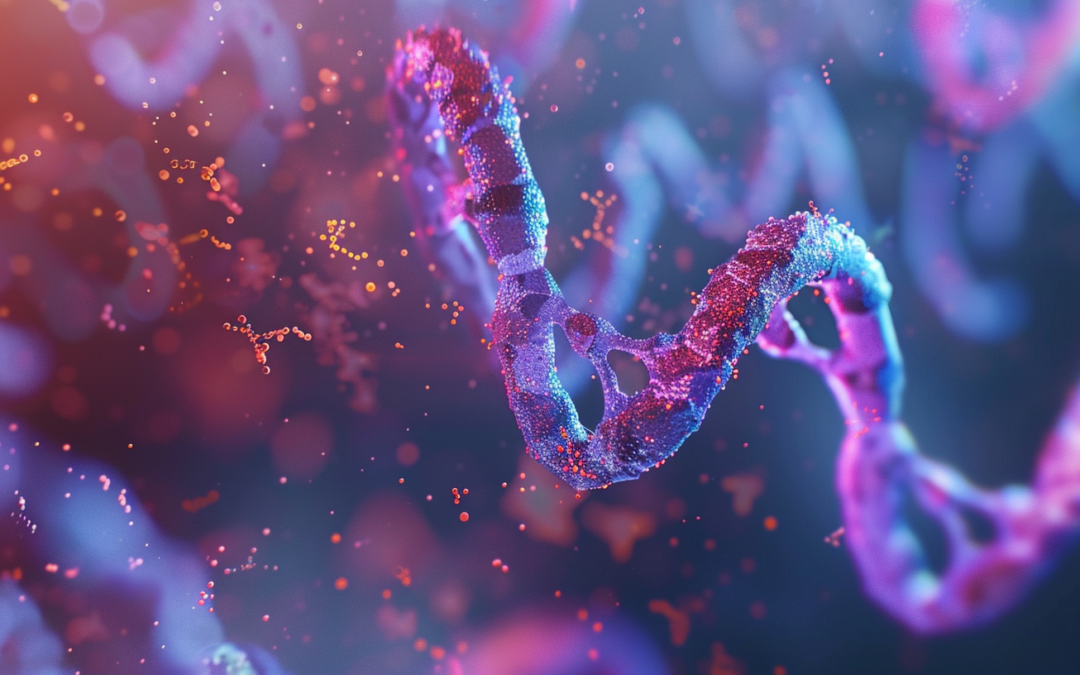By Kellen Dorsch, Medical Researcher
Fact Checked by Robert Underwood, Bio-Chemist
Aging is an inevitable aspect of life, influencing every individual differently. This intricate process, often misconceived merely as the passage of time, is actually a complex interplay of genetic, cellular, and environmental factors. The quest to understand aging not only piques scientific curiosity but also holds the key to enhancing our health span—the years we live in good health.
The Essence of Aging
At its core, aging is the accumulation of damage at the cellular and molecular levels, manifesting in physical and mental decline and increased susceptibility to chronic diseases. This damage is not linear and can be influenced by lifestyle, environment, and even stress. It’s essential to distinguish between aging as a natural biological process and the pathologies often associated with it.
The Cellular Narrative of Aging
The journey of aging is written in the language of our cells. DNA mutations, protein misfolding, and mitochondrial dysfunction collectively narrate the story of our decline. These cellular changes disrupt homeostasis—the body’s regulatory balance—leading to impaired repair mechanisms and chronic inflammation.
Inflammation: The Hidden Aggressor
Inflammation, in moderation, is a defender of health. However, when it becomes chronic, it acts as an adversary, accelerating aging and disease progression. This “inflamm-aging” lays the groundwork for a range of age-related conditions by continuously challenging our immune system.
The Oxidative Stress Dilemma
Our bodies are battlegrounds for free radicals—molecules that can cause significant cellular damage. This oxidative stress plays a pivotal role in aging, attacking DNA, proteins, and fats, leading to systemic deterioration.
Telomeres: The Biological Clocks
Telomeres protect our chromosomes but shorten with each cell division, eventually leading to cell aging or death. This attrition is a central theme in the aging saga, highlighting the delicate balance between cellular renewal and decay.
Cellular Senescence: Aging’s Footprint
Senescent cells, the “zombies” of the cellular world, refuse to die, secreting harmful substances that fuel inflammation and tissue damage. Their accumulation is a hallmark of aging, contributing to a myriad of age-related diseases.
The Hormonal Shift
Aging recalibrates our hormonal landscape, affecting everything from bone density and skin elasticity to mood and cognition. These hormonal shifts are pivotal in the aging narrative, influencing both physical and mental well-being.
The Genetic Blueprint of Longevity
Genetics play a starring role in aging, with certain genes like SIRT1, SIRT3, and FOXO3 being key players in longevity. While genetics set the stage, lifestyle and environmental factors direct the play, modulating the expression of these longevity genes.
Beyond Biology: The Role of Lifestyle
Aging is not solely a biological process. Lifestyle choices—diet, exercise, and habits like smoking and alcohol consumption—profoundly impact our health span. Embracing a healthy lifestyle can significantly slow the aging process and enhance the quality of life.
Embracing Longevity Science
The field of longevity science seeks not just to extend life but to ensure that our later years are lived in good health. Interventions like NAD+ supplementation and PEMF (Pulsed Electromagnetic Field) therapy are on the frontier of anti-aging research, promising to rejuvenate our cellular machinery and potentially reverse aspects of aging.
The exploration of aging and its countermeasures encompasses various innovative approaches, including the application of energy medicine frequency programs, such as those offered by PEMF (Pulsed Electromagnetic Field) therapy. PEMF therapy, referenced by sources like pemfhealing.app, operates on the premise that delivering electromagnetic fields to the body can stimulate cellular repair and rejuvenation. This therapeutic method is gaining traction in the anti-aging domain for its potential to mitigate the aging process, particularly in the context of telomere degradation.
Telomeres, the protective caps at the ends of chromosomes, play a crucial role in cellular aging. Each time a cell divides, its telomeres shorten, eventually leading to cellular senescence or apoptosis when they become too short. This telomere attrition is a key driver of the aging process. PEMF therapy is posited to influence cellular functions in a way that could slow down the shortening of telomeres, thereby decelerating the aging process at a cellular level.
While the precise mechanisms through which PEMF therapy may affect telomere length and aging are still under investigation, it’s suggested that the electromagnetic fields could enhance the activity of telomerase, an enzyme that helps maintain telomere length. By potentially boosting telomerase activity, PEMF therapy might slow the rate of telomere shortening and thus the cellular aging process.
This approach aligns with the broader quest for anti-aging interventions that extend not just lifespan but healthspan—the period of life spent in good health. By targeting one of the fundamental aspects of cellular aging, PEMF and similar energy medicine frequency programs offer a promising avenue for research and application in the field of longevity science. However, it’s important to approach these therapies with an evidence-based perspective, recognizing that further research is needed to fully understand their effects and optimize their use for anti-aging purposes.
In conclusion, aging is a multifaceted phenomenon shaped by an intricate web of biological, genetic, and environmental factors. Understanding these mechanisms opens the door to interventions that not only extend our lifespan but improve our health span, enabling us to live our later years with vitality and purpose. As we unravel the mysteries of aging, we edge closer to a future where longevity and good health go hand in hand, offering a new horizon for humanity’s quest for a life well-lived.

